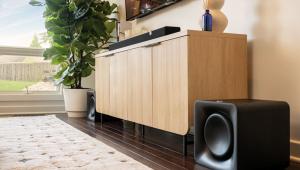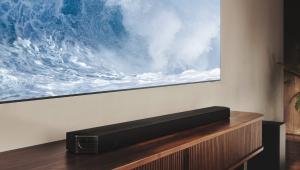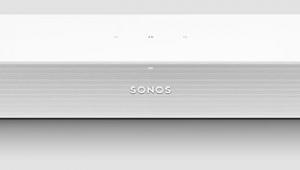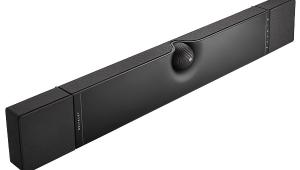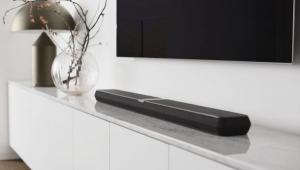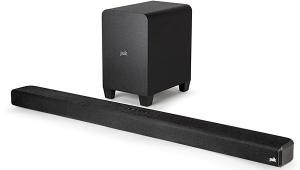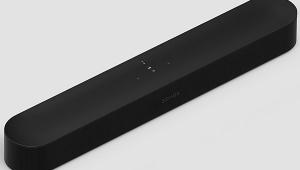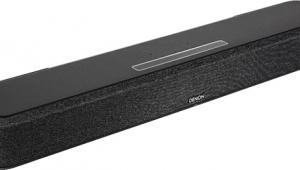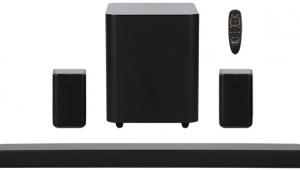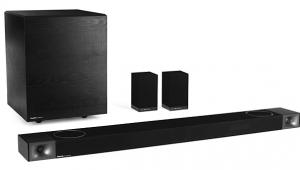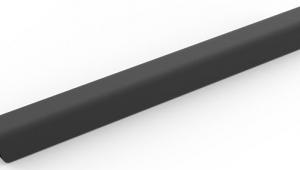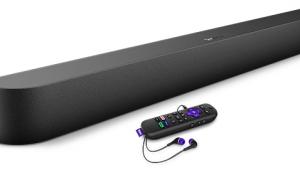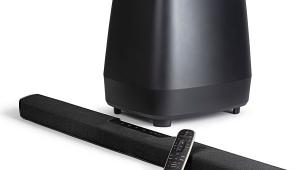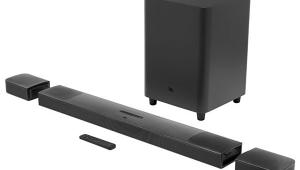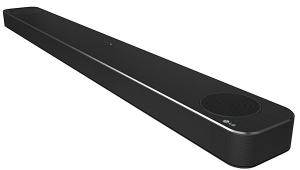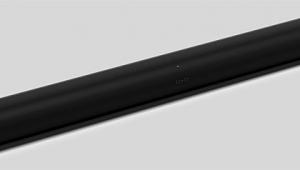Test Report: Zvox Audio Z-Base 580 TV Sound System

Improving TV sound is easy: Add a soundbar. But getting the soundbar to work seamlessly with the TV? That’s hard.
Ideally, you’d want the system to work the same way as the TV would on its own. When you turn the TV on, the soundbar comes on, too. When you hit the volume and mute buttons on the TV remote, the soundbar responds. This way, anyone who can work a TV could work the whole system. And you wouldn’t have to be on call whenever other family members can’t figure out how the A/V gear works.
You’d think that one of the giant corporations that make TVs and soundbars would have done this by now, but to my knowledge, none has bothered beyond a few half-hearted attempts. Meanwhile, Zvox Audio — a little independent company whose annual R&D budget is probably less than the monthly coffee budget at the HQ of Panasonic or Samsung — seems to have solved the problem quite gracefully with its new Z-Base 580.
In many ways, the 580 follows the same formula that made the company’s original Z-Base models a success. It’s a slim black box that fits under your TV. It incorporates left, center, and right speakers: three 3.25-inch midrange/tweeter drivers in the center and one each at the far left and right of the enclosure. It has dual 6.5-inch woofers, and all amplification is internal. And it uses Zvox’s PhaseCue processing — this time in an updated PhaseCue II version.
But in other ways, the 580 is radically different from any past Zvox product. While previous Z-Bases were all-analog, the 580 uses a digital signal processing (DSP) chip. It also accepts digital signals (Dolby Digital or PCM) through its coaxial and optical digital inputs. An alphanumeric display behind the front grille shows volume level and function indicators.
Most important, the Zvox 580 integrates almost seamlessly with your TV. After you place it under your TV, you punch a few buttons on the soundbar’s front panel to teach it the power on, power off, volume up/down, and mute commands from your set’s remote. From that point on, the 580 will respond to your TV’s remote just as your TV does. Shut off your set’s internal speakers, and you’ll hear only the sound of the 580. But don’t throw away the little remote included with the Zvox 580: You still need it to choose among the soundbar’s three sound-expansion modes and to activate special features like Dialog Emphasis and Volume Leveling.
Wait a minute, though, before you type your Visa number into Zvox’s site. I said it integrates “almost seamlessly” with your TV, not “seamlessly.” More on that shortly.
Setup
From a physical standpoint, there’s not much to setting up the Zvox 580. Move your TV, put the 580 in its place, and put the TV on top. It’s much easier than trying to hang a soundbar on the wall, in part because the cables are a bit easier to hide.
You can connect the 580 to your TV using the soundbar’s analog or digital inputs. I tried both, relying mainly on a Toslink optical digital audio connection from my Samsung 47-inch LCD TV. I connected a Samsung Blu-ray Disc player to the TV instead of to the 580, which allowed me to do all of my source selection through the TV. I used the TV’s onscreen menu to turn its internal speakers off.
The process of teaching the TV remote codes to the 580 took only 5 minutes. So, in a matter of about 15 minutes total, I had a clean-looking, fully functioning audio/video system all set up. And when I hit the TV remote’s power button, the soundbar came right on with it, just as I’d always dreamed one would.
That said, the operation sometimes wasn’t seamless. The soundbar automatically powers down after about 5 minutes with no signal, but your TV doesn’t, so if you walk away from the TV to fix yourself a drink with your Blu-ray player in pause mode, you could come back to fi nd the TV on and the soundbar off. (The “cheat sheet” included with the unit does tell you how to defeat this feature.) Also — and I’m not sure why this occurs — the input selector button on the TV remote controls the input selector on the soundbar, too, so changing the input on the TV also changes the input on the soundbar. That’s annoying.
- Log in or register to post comments
